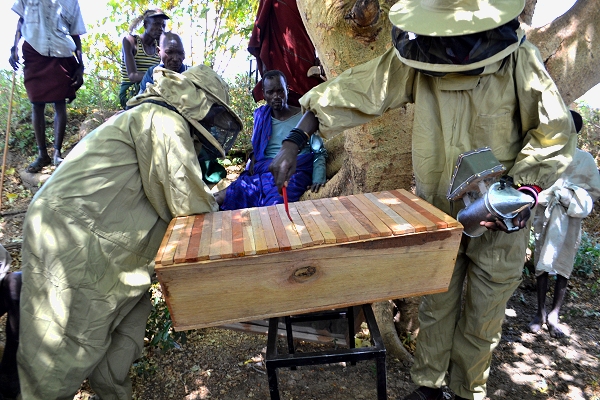
Fruits of East Africa PfR ‘writeshop’ will appear as a book

An intensive participatory workshop in Nairobi earlier this month documented five years’ implementation and learning from the Partners for Resilience (PfR) countries in East Africa: Ethiopia, Kenya and Uganda.
The case-study articles it generated will now be published as a collection in book form.
Facilitated by the Climate Centre, the sessions used the “writeshop” methodology first developed by the International Institute of Rural Reconstruction.
More than 30 people from all three countries gathered in the Kenyan capital to document success stories and lessons learned from implementing PfR, which integrates disaster risk reduction, climate adaptation and ecosystem management and restoration in nine countries worldwide.
Coherent, readable
Nearly 20 case studies were originated and mutually critiqued by the participants for content, clarity, and consistency; the writers then sat with assigned editors sat to incorporate feedback.
By the end of the week, all the case studies had undergone a rigorous creative process of writing, reading and editing.
Assisted by local journalists, the writers – mainly field-based practitioners – were able to turn what started out as rough drafts into attractive, coherent and readable stories.
The case studies – based on interviews with community members – tell of the painstaking but rewarding process of building the resilience of some of the region’s most vulnerable populations.
‘Lifeline’
Guyo Dida, a Borana-community elder in the community of Biliqo, central Kenya, for example, told Kenyan writeshop participant Boru Godana about PfR work to rehabilitate and protect the kuro bisan owo – a natural hot spring in Chari ward that is a treasured natural resource for local pastoralists.
“The springs mean everything to pastoralists. It is our economic lifeline, a God-given blessing to our community and our livestock,” he told Godana.
“We depend on it for our entire livelihood. Once a year, pastoralists visit the springs for replenishment. We equate these visits to an annual health check-up.”
Incentives for ecosystem-based adaptation in the northern Ugandan district of Nakapiripirit were the focus of an article by Leonard Akwany, from Wetlands International in Kenya.
“We have been cutting and burning our trees, not knowing that we are losing other livelihood resources,” he quoted pastoralists as saying.
“Our grasslands are providing pastures to our animals,” they told him.
“We get income from honey that has helped me buy food for my family. We need to protect our ecosystem to live.”
Drought cycle
Roba Taticha, head teacher at Biliqo’s primary school, told Godana: “Training on drought-cycle management [for schools] has come at a very opportune moment, and we shall use it in our response to droughts.”
A colour-coded flag flown at the school now illustrates the current stage of the drought cycle for local people and travellers on the Isiolo-Wajir highway alike.
These and the other case studies from the Nairobi writeshop will now be compiled into a book to be shared among people working in community resilience as well as policy-makers.
In East Africa, the PfR are CARE, the Climate Centre, Cordaid, the Netherlands Red Cross and Wetlands International, as well as local civil society implementing partners.
Ugandan beekeepers in Nakapiripirit district practice their skills as part of the PfR programme in the country. Their experience was detailed in a case study at this month’s Nairobi writeshop that documented five years’ work in Ethiopia, Kenya and Uganda. (Kocho Justin Bob/Ecological Christian Organisation-Uganda)